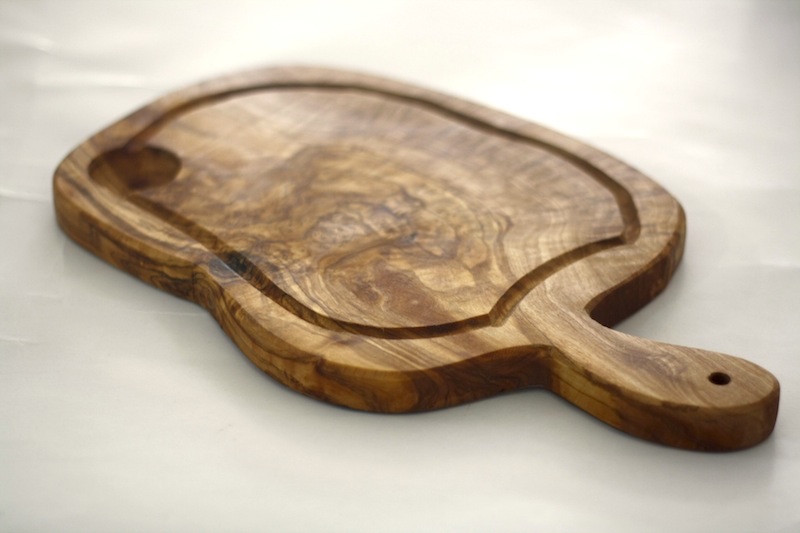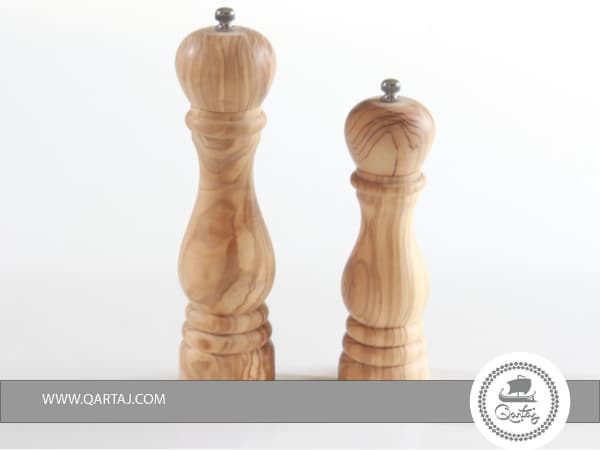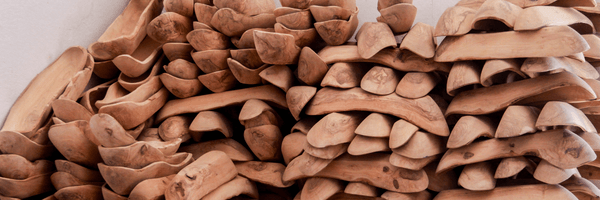
Due to its lifespan and its fruit, olives, the evergreen olive tree is a symbol of fertility. It has become a cultural touchstone, notably in the Mediterranean region, due to its ability to grow on parched soil and in extreme heat. For thousands of years, people have grown it as a beneficial plant, and today's consumers are more and more interested in both olives and olive wood.
Olive wood is a highly popular raw material used to make many different decorations and household items. The hardwood has a gorgeous, distinctive texture and is strong and long-lasting. Each product is distinctive because of the gnarled growth's distinctive patterns.
You will discover all there is to know about this magnificent wood species and get the answers to frequently asked questions.
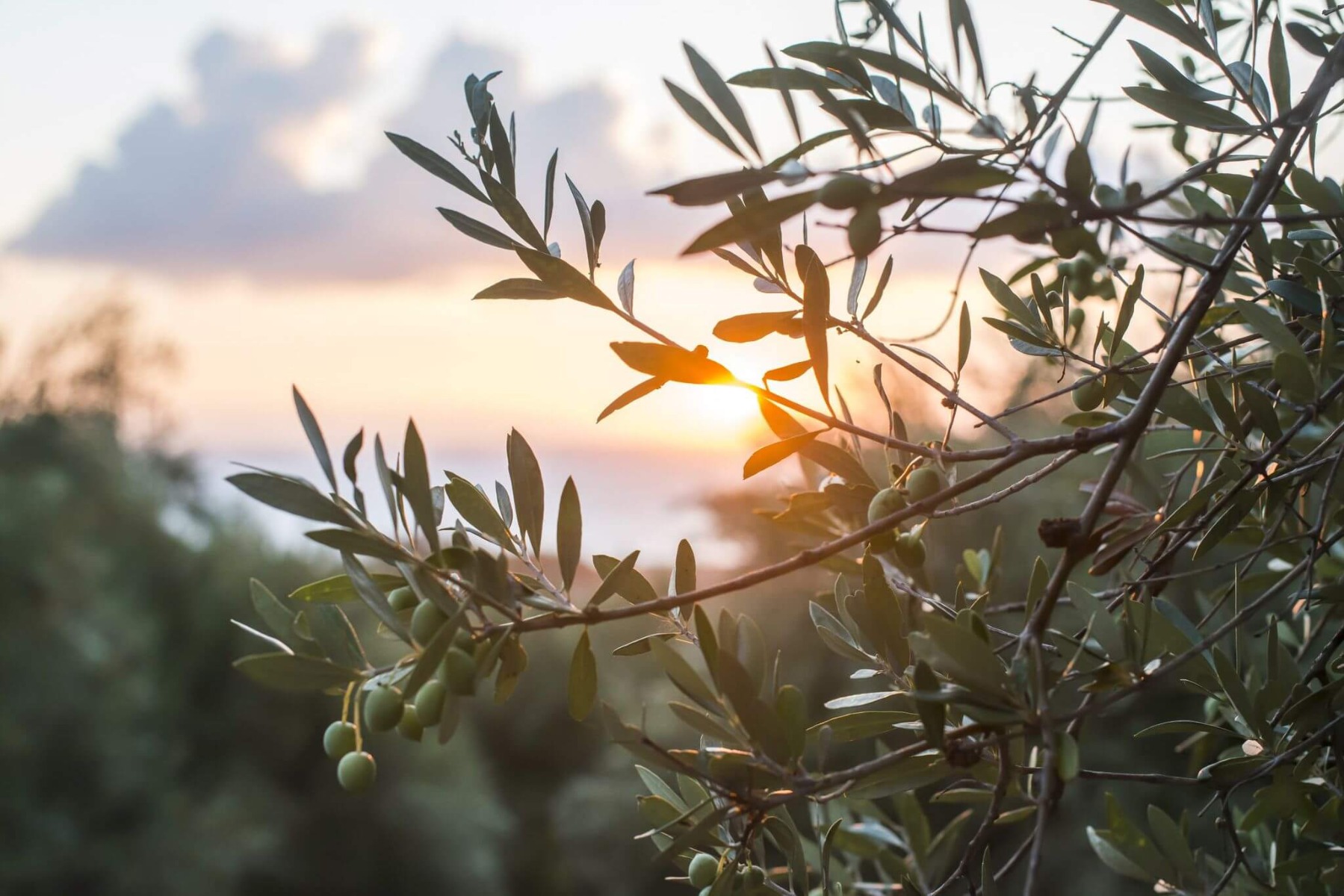
The most important facts in brief
Olive wood's distinctive texture and great resilience make it a popular and long-lasting material for culinary utensils, furniture, and other equipment.
Olive wood guarantees optimum hygiene, especially in the kitchen, because it is antibacterial, odor- and water-resistant.
Olive trees grow slowly, and the wood must first dry out before processing. As a result, olive wood is a valued raw material.
1 The most important facts in brief
2 Background Info: What You Need to Know About Olive Wood
2.1 What is olive wood and where does it come from?
2.2What does olive wood look like?
2.3 What are the properties of olive wood?
2.4 What is olive wood used for?
2.5 Is olive wood sustainable?
2.6 How do you properly clean olive wood?
2.7 How to properly care for olive wood?
2.8 An overview of Qartaj’s Olive Wood Collection
3 Conclusion
Background information: What you need to know about olive wood
We hope to address any of your queries regarding olive wood in the following post. You will learn everything there is to know about the qualities, care, and use of this lovely and popular raw material.
What is olive wood and where does it come from?
The wood of the olive tree is known as olive wood. This tree is found primarily in the Mediterranean region. Since the fourth century BC, countries around the Mediterranean Sea have produced olive trees as beneficial plants. As a result, the plant has become a symbol of this region's culture, with over 1000 distinct species presently existing.
To grow and prosper, the olive tree requires highly particular environmental conditions. It requires very little water and is extremely heat resistant. It, on the other hand, dies swiftly in cold temperatures.
Olive trees are mostly found in the Mediterranean area.
These circumstances exist in the Mediterranean area, which is why the olive tree is mostly endemic to that region. The Mediterranean's olive tree population is estimated to reach 500 million. In Tunisia alone, the population is at a count of 65 million. Because demand is now expanding, the number might become much higher in the future.
Some olive tree kinds may also be found in the Middle East, the Black Sea, southern Africa, Australia, India, America, and Japan, in addition to the Mediterranean region. Today, wood from African trees is mostly used to make kitchenware.
Olive trees may grow to be 10 to 20 meters tall, depending on the type. They are evergreen trees with a smooth surface when young. With age, the trees become branched and exhibit a distinctive twisted growth and cracked bark.
The trees are growing slowly because of the drought. They, on the other hand, live for hundreds of years. The oldest known tree is said to be 4,000 years old. In Tunisia, the oldest olive tree can be found in the little northern village of Echraf. The tree is 2,500 years old.
The wood of the olive tree must be cured for several years before it can be processed. This, together with the extremely slow growth rate, is why olive wood is so valuable.
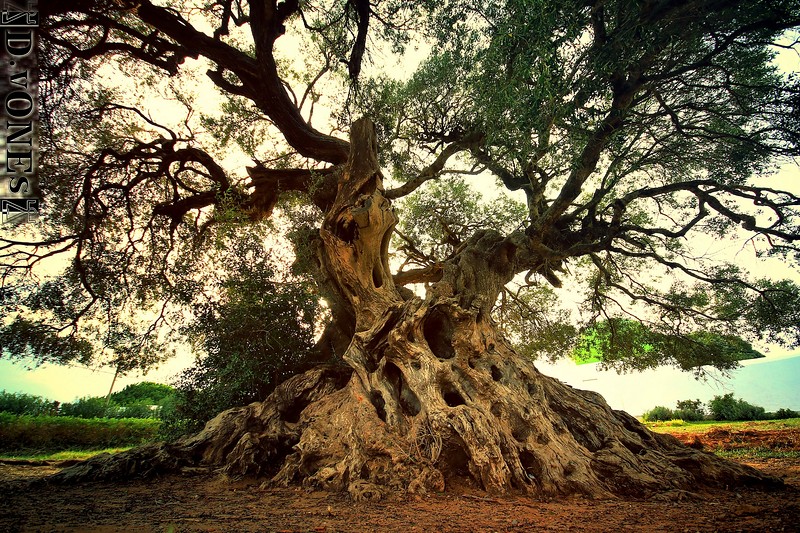
2,500-year-old olive tree in Echraf, northern Tunisia. Credit: D. VONES
What does olive wood look like?
Olive wood has a unique appearance. It is distinguished by its distinct grain. The twisted growth characteristic of olive trees produces this marble-like texture. The grain characteristics vary depending on the direction in which the wood is sliced open.
The color of the wood consists of different warm tones, from yellow to red. The wood of the inside of the trunk tends to be darker, while the sapwood, i.e. the outer, younger wood, tends to be light brown or beige. Over the years, the wood tends to darken.
Olive wood, like other types of wood, develops a patina over time. This is the term used to describe the top layer of wood, which changes somewhat in appearance owing to weathering. This process cannot be prevented; instead, it can be retarded by not oiling the olive wood. When the wood is oiled, the patina develops more quickly.
What are the properties of olive wood?
Olive wood has various qualities that make it a valuable and extremely useful raw material, in addition to its distinctive look. The key advantages of it are described below.
Olive wood is hard
Olive trees have dense wood because they grow slowly. Because it is a hardwood, olive wood is strong and long-lasting. Brinell units are used to quantify wood hardness. The tougher the wood, the higher the value. Comparing the hardness of several types of wood is shown in the following table:
|
Wood type |
Hardness (N/mm2) |
|
Rosewood |
5,8 |
|
Olivewood |
5,3 |
|
Acacia |
4,8 |
|
Bamboo |
4,3 |
|
Oak |
3,5 |
|
Pine |
1,3 |
Rosewood is just slightly tougher than olive wood, as you can see. Furthermore, only a select few exotic kinds of wood are harder than olive wood.
Olive wood is antibacterial
Olive wood has a built-in antibacterial agent. This is because the wood's oils and the bitter compound oleuropein, which both make the environment unpleasant for bacteria, are present.
Olive wood is particularly suited for kitchen items, especially cutting boards, as well as for tableware and cutlery due to its antibacterial characteristics. Olive wood is said to be extremely sanitary when used for food.
Olive wood is odor resistant
Olive wood has relatively small pores, thus food aromas and odors don't tend to linger there. This is only one of the numerous factors that make it ideal for kitchen tools as well as for dishes and cutlery.
Olive wood is water and stain resistant
The olive tree's wood naturally repels water because it contains the oil produced by the plant. Olive wood also does not acquire food stains and discolorations as rapidly.
Olive wood is prone to cracking
Olive wood has the drawback of being very hard to work and hence prone to cracking, especially when subjected to significant temperature changes. It needs to be dried slowly over a period of years before processing can begin. This may lower the possibility of tears.
What is olive wood used for?
There are several applications for olive wood. It's perfect for manufacturing furniture because of its strength and lovely texture. There are solid wood beds, tables, and everything in between, including bookcases and chests of drawers.
In Tunisia, olive wood is a common raw material for ornamental things because of its distinctive pattern. Olive wood always looks lovely and may provide an appearance that ranges from Mediterranean-rustic to quite noble, whether it is used to create a wooden bowl to display fruits, a chessboard, or a merely ornamental object.
Olive wood is not only extremely resilient and, hence, resilient under heavy usage, but it is also odor- and antibacterial-resistant. Therefore, it is especially appropriate for culinary tools like pepper mills, razor clams, cutting boards, mortars, and even cutlery.
In the form of an exceptionally opulent parquet floor, olive wood can also be utilized as flooring. An olive wood parquet floor is resistant to dents since it is hardwood.
Numerous instruments may be created from olive wood because of the material's excellent acoustic and resonance qualities. Due to its water resistance, the wood is especially excellent for wind instruments.
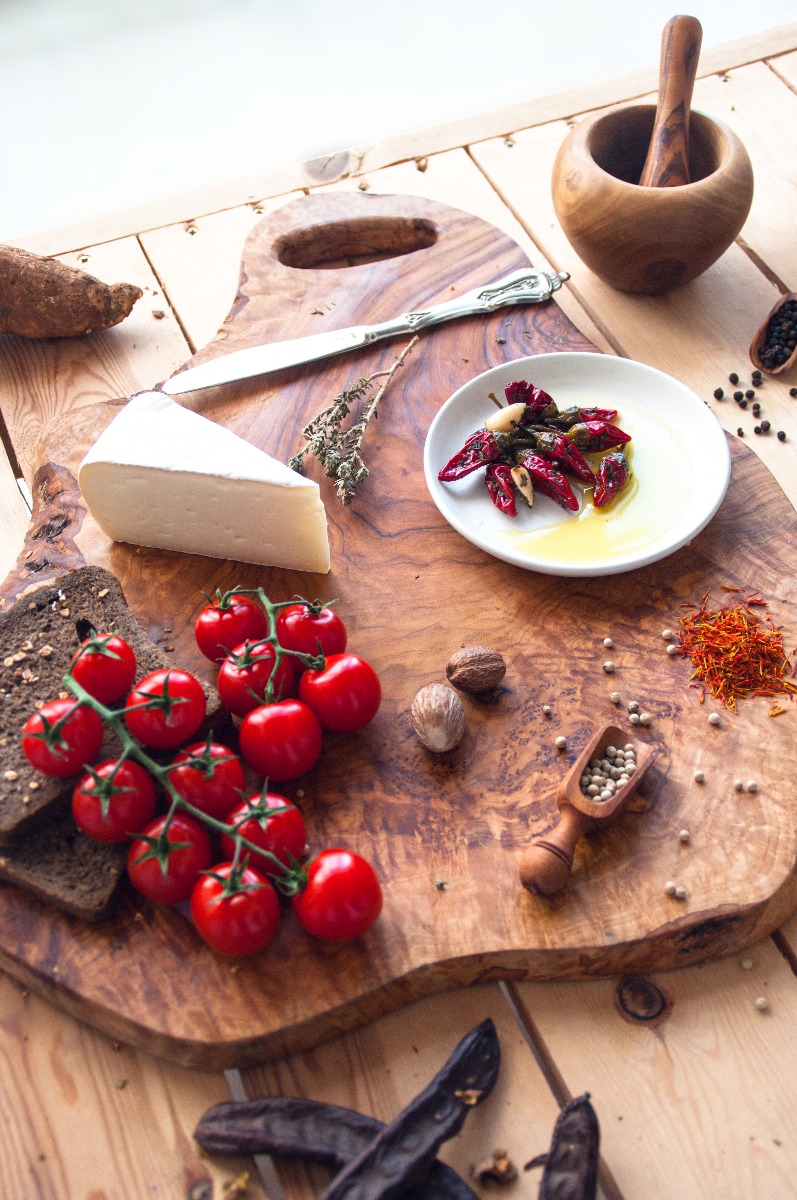
Is olive wood sustainable?
The olive tree is a renewable natural resource. Olive wood is often regarded as sustainable because of this. It's crucial to note in this context that olive trees are typically only cut down if they can no longer produce olives and are no longer employed for oil production.
Tunisian olive wood production is also done this way.
Due to its toughness and durability, olive wood is also highly long-lasting. So it may be regarded as sustainable as a building material, for making kitchenware or furniture, for instance.
Even after frequent usage, olive wood pieces seldom need to be replaced because of their extended lifetime. For instance, a plastic salad bowl will eventually get unclean and need to be thrown away, whereas an olive wood salad bowl will survive for decades.
However, the lifetime of the wood depends on good maintenance; otherwise, it may grow brittle and break. The next chapters will cover every aspect of the ideal handling and cleaning of the priceless wood.
How do you properly clean olive wood?
It is crucial to clean olive wood products properly. The wrong kind of cleaning might cause the wood to dry up and break. It can also bloat and turn gray if you soak it in water for too long.
Because of this, you should never put plates made of olive wood in the dishwasher. Dishwashing soap is also not advised since it dissolves the oils that are present in wood naturally. It is sufficient to wash the wood with warm water.
Cutting boards, plates, and other items made of olive wood should be arranged vertically so that water may drain out as quickly as possible and does not sit on the wood for too long
We recommend drying the wood with a cloth after cleaning. In this way swelling of the wood can be avoided completely. In addition, you deprive the bacteria that may have remained from the food on the wood of their basis for reproduction.
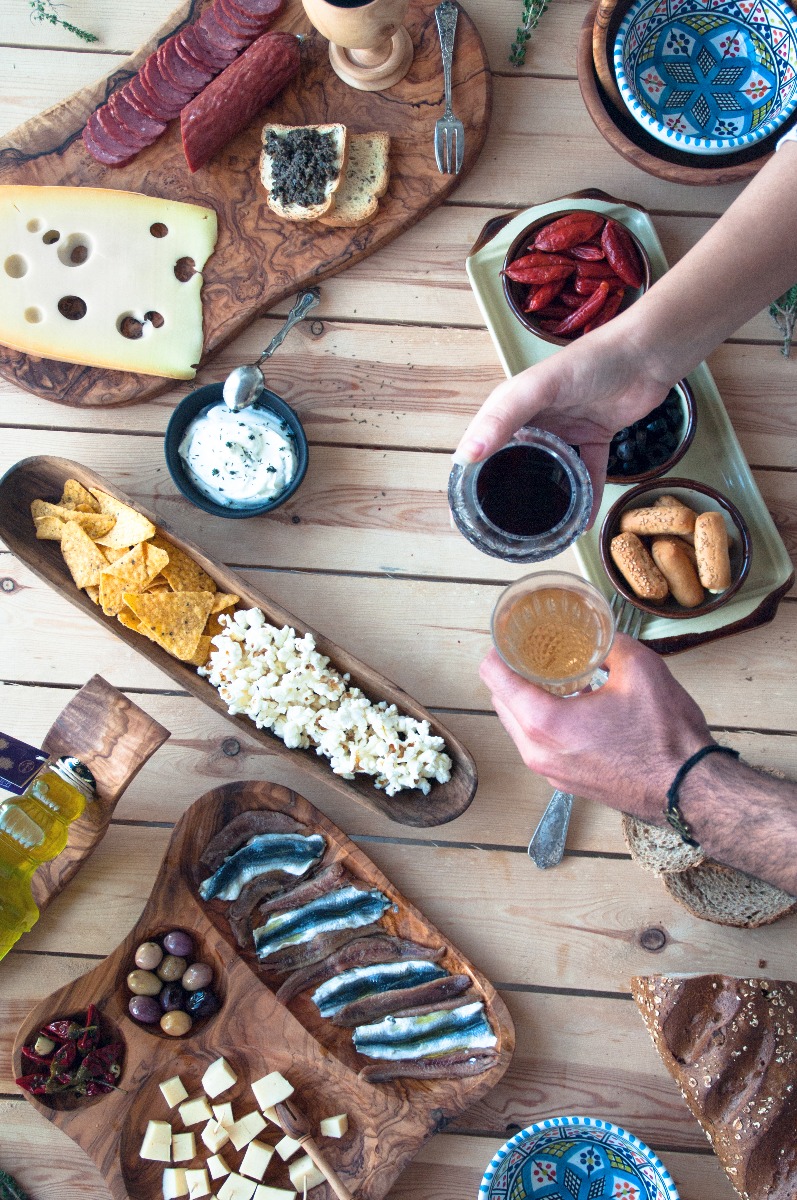
How to properly care for olive wood?
If you want, you can oil the olive wood. The oil changes the color of the wood slightly. Unoiled it has a light grayish tint, when oiled the color becomes warmer and more yellow. You should be aware that oiling accelerates the development of a patina. However, regular oiling can protect the wood from drying out and thus from cracking.
For items that are often touched or come into contact with food, oiling is not really necessary because the wood comes into constant contact with grease and is therefore automatically greased.
If you do want to oil the olive wood, you can do that with vegetable oil. Olive oil, linseed oil or liquid beeswax are particularly suitable. It is important that the oil is about 50 degrees warm. Cold rubbed can make the wood greasy and turn black.
If olive wood items have become old, greasy and have a patina, you can also sand them. Very fine sandpaper or sanding wool is suitable for this. Work in the direction of the grain and oil the wood after sanding. If necessary, you can repeat the process after a certain amount of time. This creates a smooth, silky surface.
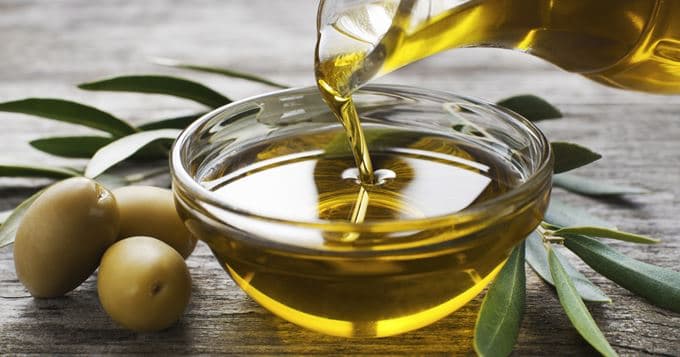
Qartaj’s Olive Wood Products
Cutting and Cheese Boards
A statement piece in the kitchen, our olive wood cutting boards and cheese boards are some of our bestsellers. Go for a rustic or more refined look. The warm color and natural pattern makes these Tunisian olive wood boards unique and luxurious. All items can be custom made and personalized.
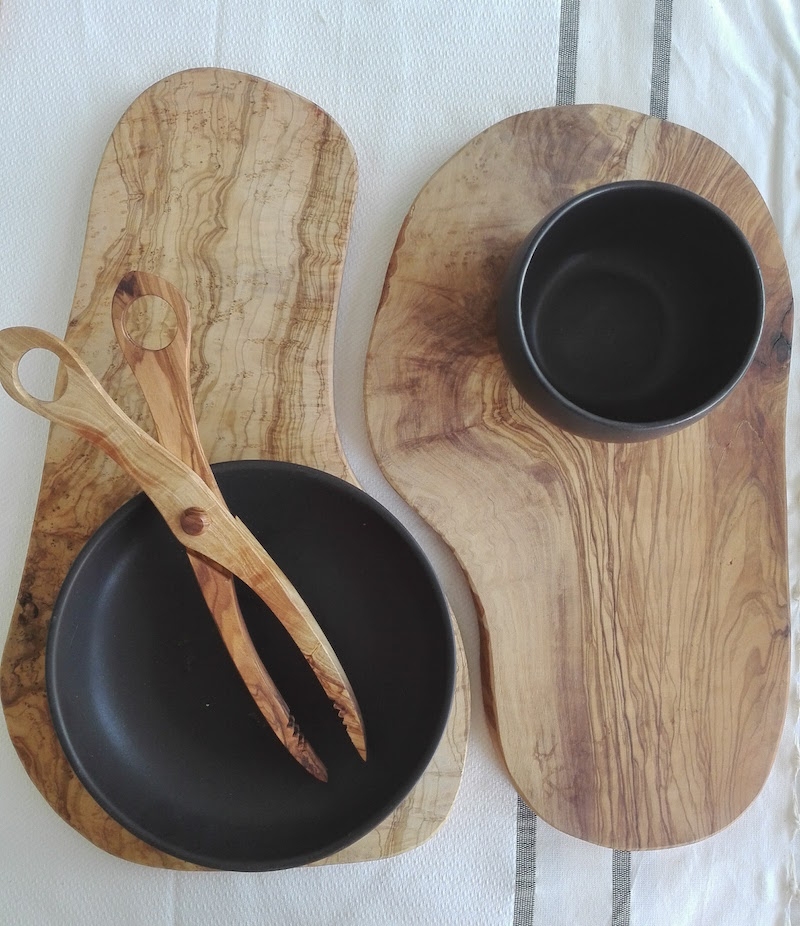
Bowls
From extra large to mini, olive wood bowls can be used anywhere and any way in the kitchen or home. It is a refined and luxurious piece that is unique and will last for years. All items can be custom made and personalzed.
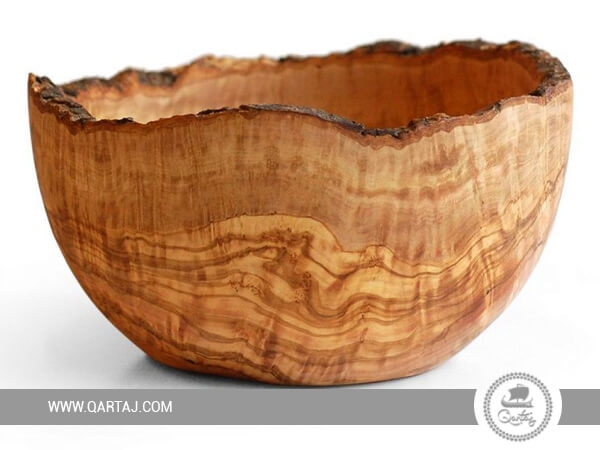
Kitchen utensils
Discover our large catalog of Tunisian olive wood kitchen utensils from spoons to juicers, our utensils are both beautiful and practical. A durable and rustic addition to any kitchen. All items can be custom made and personalized.
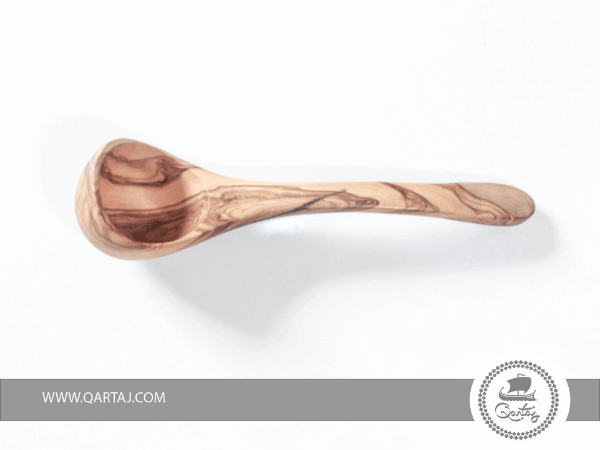
Plates and trays
Our Tunisian olive wood collection is handmade from sustainably sourced olive wood. Our olive wood plates are durable and antibacterial, making it perfect for kitchen- and tableware.
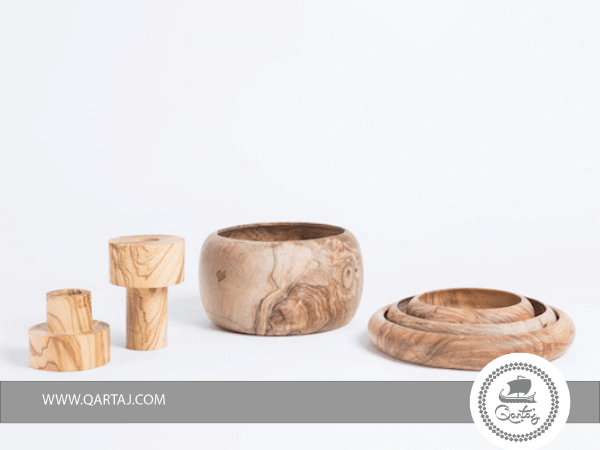
Chess
An age old game made out of an age old tree, it just fits perfectly together. Refine your chess game with boards and pieces of 100% sustainable Tunisian olive wood. Discover unique chess boards and tables made by our artisans.
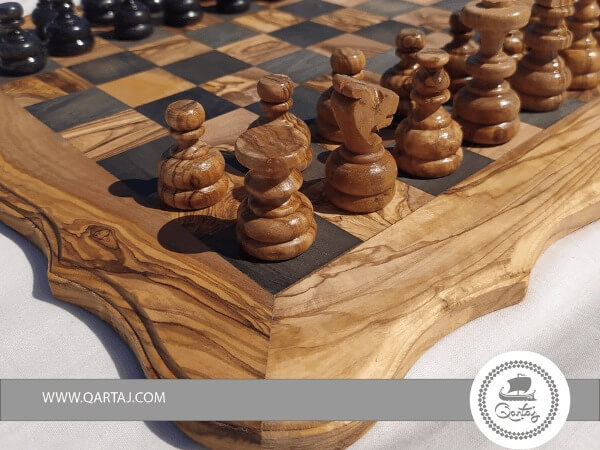
Other olive wood products
Our olive wood collection is very large. Find all kinds of practical items and knick-knacks made out of Tunisian olive wood. Discover a vast collection of olive wood objects to incorporate into your own catalog.
Conclusion
The wood of the olive tree is known for its beautiful appearance. In the form of kitchen utensils, it spreads a rustic Mediterranean flair and, thanks to its antibacterial and water-repellent properties, ensures the best hygiene in the kitchen. But it is also used in the manufacture of furniture and instruments, in the form of decorative objects and even as a particularly fine floor covering.
Olive wood, like any other wood, is a natural, renewable resource. If properly cared for and not exposed to excessive temperature fluctuations, olive wood is a particularly robust and durable wood due to its high density and hardness. For these reasons, it can be classified as a durable material.
Discover the largest b2b online catalog of Tunisian olive wood creations by skilled artisans now on qartaj.com.

